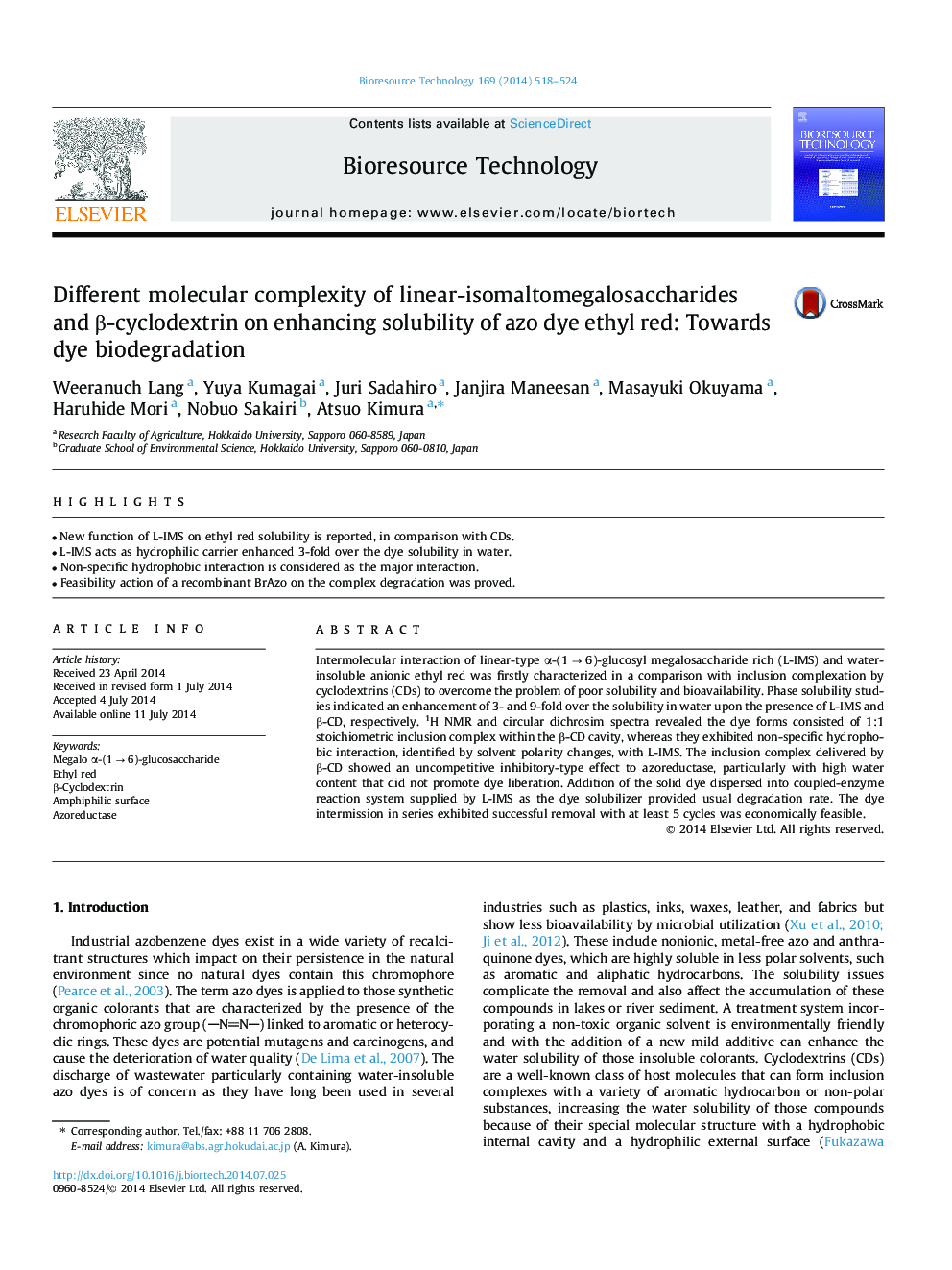| Article ID | Journal | Published Year | Pages | File Type |
|---|---|---|---|---|
| 680619 | Bioresource Technology | 2014 | 7 Pages |
•New function of L-IMS on ethyl red solubility is reported, in comparison with CDs.•L-IMS acts as hydrophilic carrier enhanced 3-fold over the dye solubility in water.•Non-specific hydrophobic interaction is considered as the major interaction.•Feasibility action of a recombinant BrAzo on the complex degradation was proved.
Intermolecular interaction of linear-type α-(1 → 6)-glucosyl megalosaccharide rich (L-IMS) and water-insoluble anionic ethyl red was firstly characterized in a comparison with inclusion complexation by cyclodextrins (CDs) to overcome the problem of poor solubility and bioavailability. Phase solubility studies indicated an enhancement of 3- and 9-fold over the solubility in water upon the presence of L-IMS and β-CD, respectively. 1H NMR and circular dichrosim spectra revealed the dye forms consisted of 1:1 stoichiometric inclusion complex within the β-CD cavity, whereas they exhibited non-specific hydrophobic interaction, identified by solvent polarity changes, with L-IMS. The inclusion complex delivered by β-CD showed an uncompetitive inhibitory-type effect to azoreductase, particularly with high water content that did not promote dye liberation. Addition of the solid dye dispersed into coupled-enzyme reaction system supplied by L-IMS as the dye solubilizer provided usual degradation rate. The dye intermission in series exhibited successful removal with at least 5 cycles was economically feasible.
